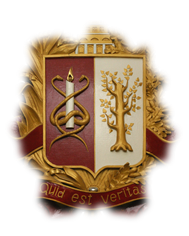Issue: 2023, Vol. 28, No. 3
DYNAMICS OF HEALTH STATUS AND OUTCOMES OF PERINATAL PATHOLOGY IN DEEPLY PREMATURE BABIES AT THE AGE OF THREE
- Keywords
- deeply premature newborns, respiratory disorders, respiratory distress syndrome, congenital pneumonia, neonatal period, health status, development
- Abstarct
- Deeply premature babies are the most vulnerable in terms of forming severe pathological states which are connected with manifested morphofunctional immaturity of all organs and systems both at birth and in distant life periods; it requires the organization of dynamic observation of these children at out-patient level. Objective – to analyze health status in deeply premature babies at the stage of being in the hospital after birth and at the age of three years. Material and methods. The authors carried out dynamic observation of 115 children born at the term of gestation which was less than 32 weeks, from the moment of birth to the age of three. Children were observed at the Ivanovo Research Institute of Maternity and Childhood by V.N. Gorodkov of the Ministry of Healthcare of the Russian Federation. Complex clinical examination in correspondence with current orders, methodical letters and clinical recommendations was performed firstly at maternity department and secondly at the age of three. Results and discussion. Deeply premature babies are often born with asphyxia, with respiratory disorders, they required prolong respiratory support; cerebral ischemia of the 3 rd stage and intraventricular hemorrhages of 2 nd and 3 rd stages, and also severe anemia, hemodynamically significant arterial duct, retinopathy of prematurity (RP) and bronchopulmonary dysplasia (BPD) are often diagnosed in them. Step-by-step system of medical care for deeply premature babies included department of reanimation and intensive therapy for newborns, department of nursing premature babies of the second stage, cat- amnesis room, department of medical rehabilitation of children with consequences of perinatal lesions of central nervous system (CNS). After treatment and rehabilitation by the age of three 79,1 % children had normal physical development; 60 % – I group of neuropsychic development (NPD); 70,4 % – I and II health groups so they had no chronic pathology. Conclusion. Properly grounded routing, adequate treatment, dynamic observation and abilitation of deeply premature babies resulted in reduced risks for severe pathology development in this category of patients.


 Vestnik_3_2023-23-27
Vestnik_3_2023-23-27